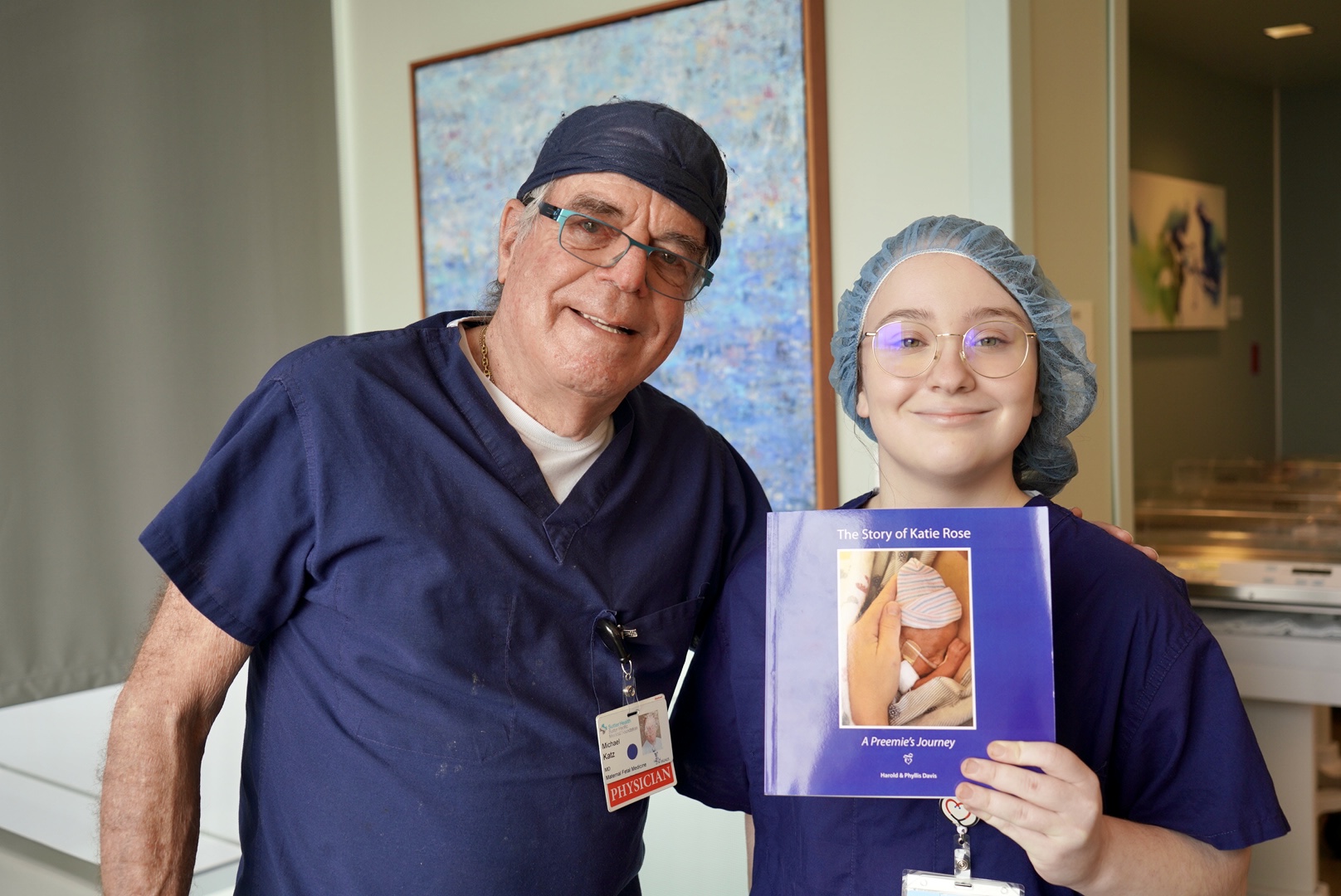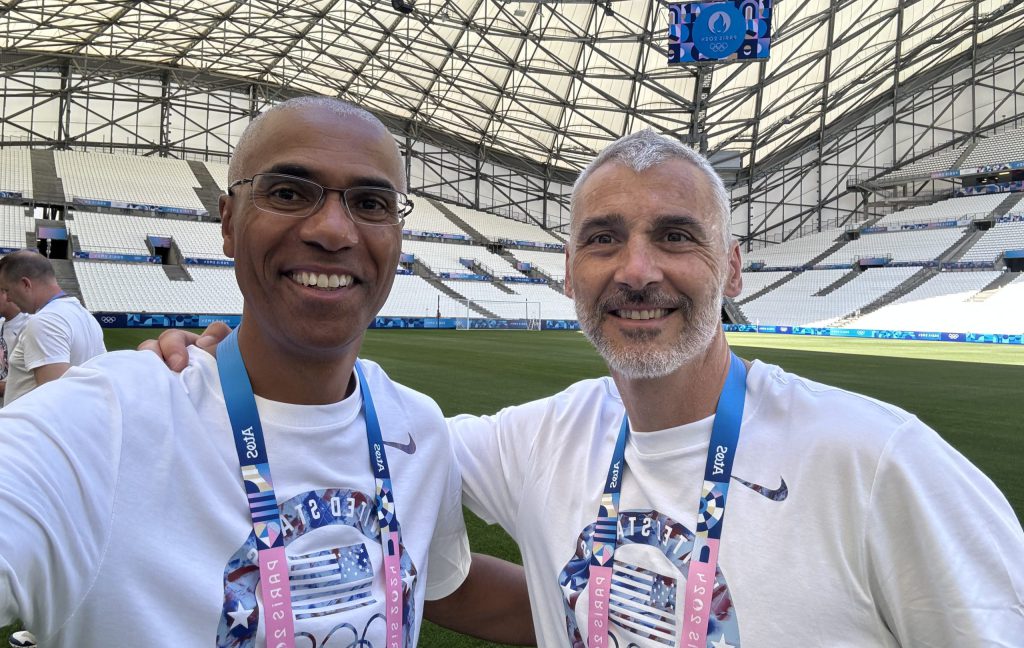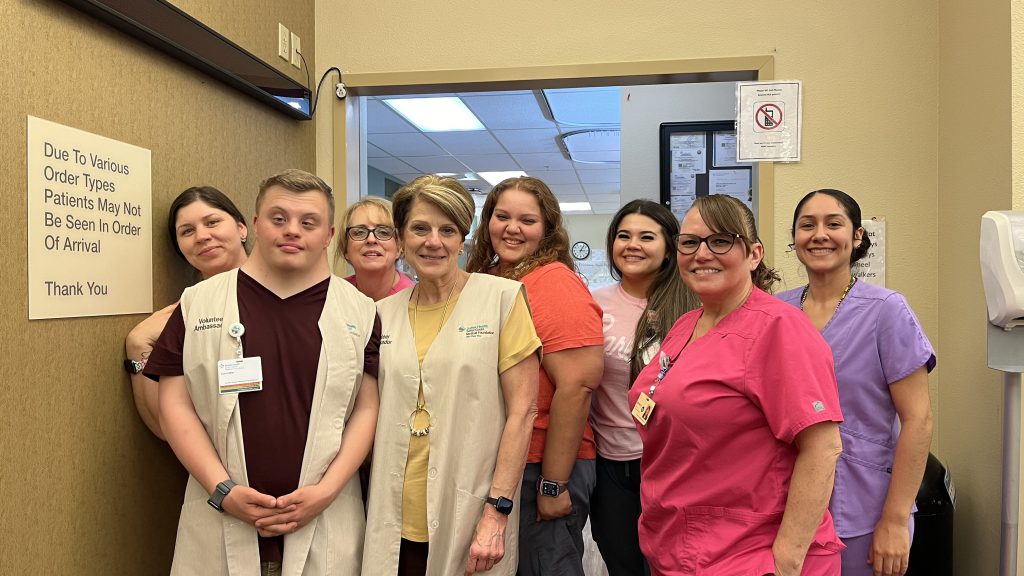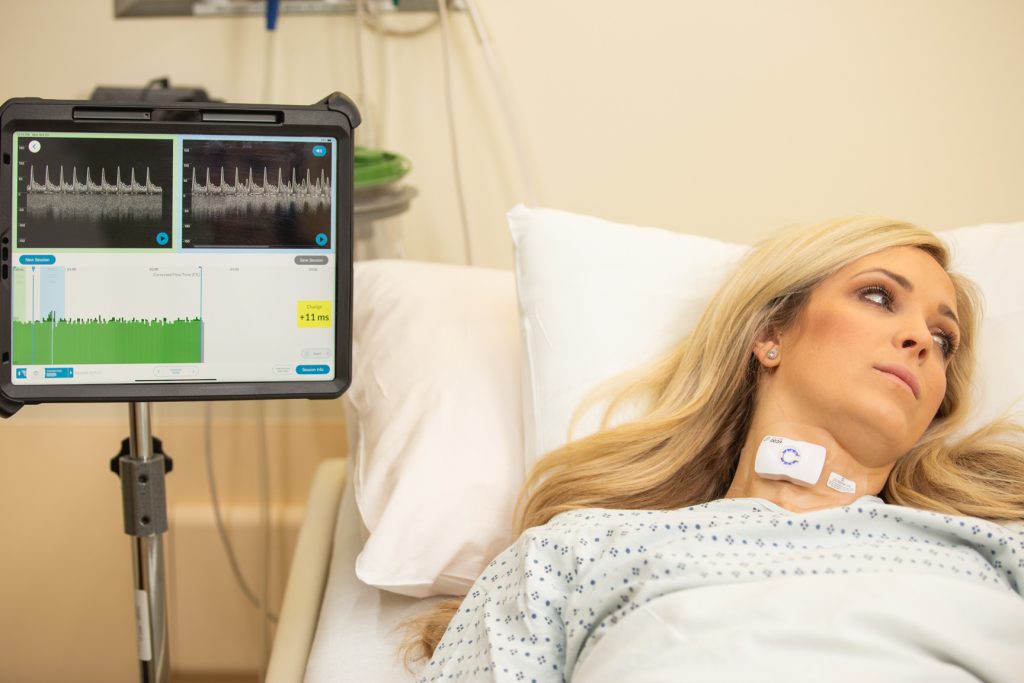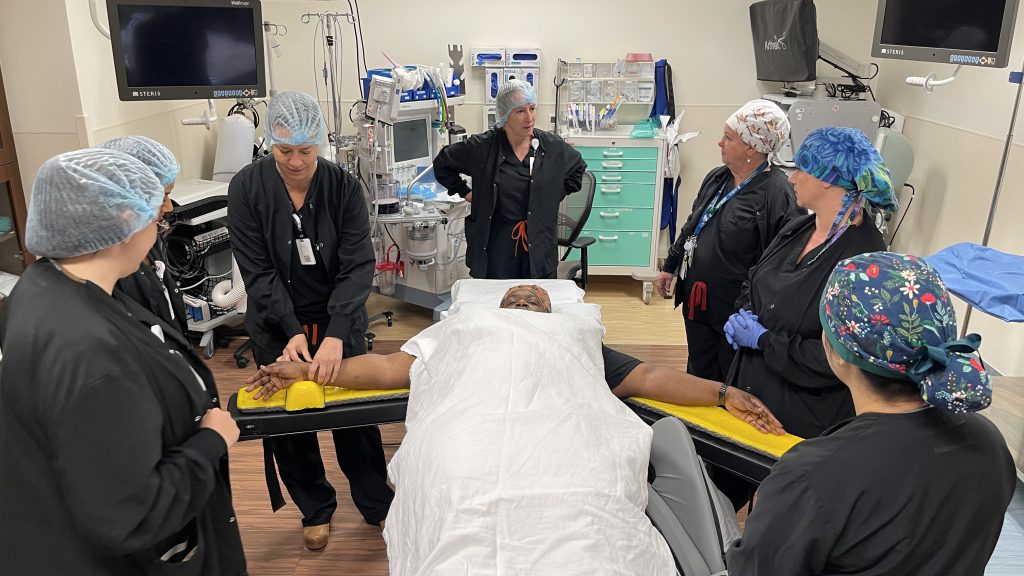Katie Davis once weighed only as much as six sticks of butter, recalls her mom, Phyllis Davis.
“She easily fit in the palm of her dad’s hand,” Phyllis says. “Her head was the size of a small lemon.”
Born at 24-weeks (a full-term pregnancy is 40 weeks), Katie was a premature baby or a “preemie.”
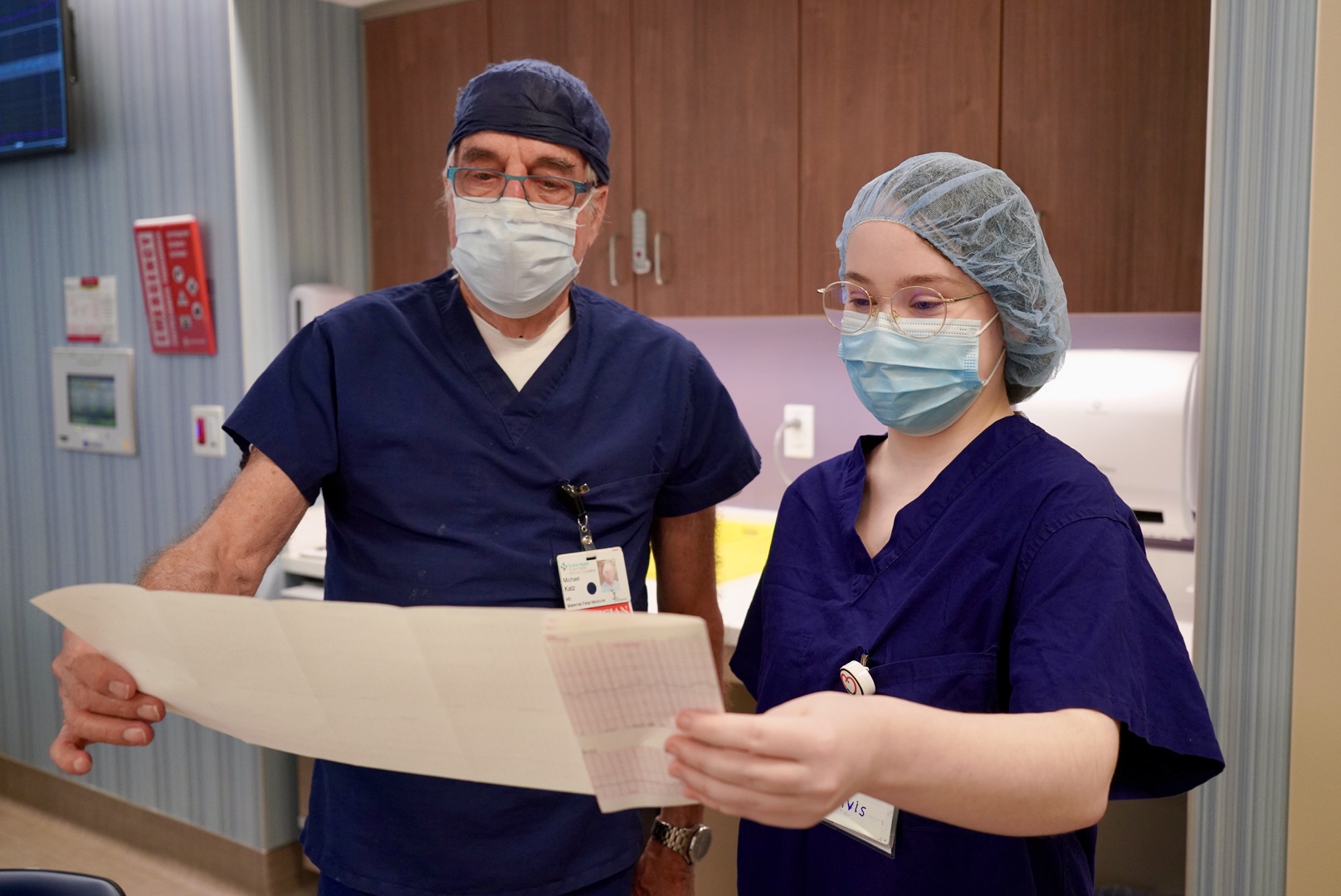
Dr. Michael Katz shows Katie Davis a fetal heart monitor tracing.
She was meticulously and lovingly cared for in the Neonatal Intensive Care Unit (NICU for short) at Sutter’s California Pacific Medical Center (CPMC). The NICU now resides at CPMC’s newly opened Van Ness campus in San Francisco.
This July, Katie returned to the medical center’s state-of-the-art NICU as a studious 15-year-old, who loves to bake and draw in her spare time.
She was there to shadow Dr. Michael Katz, a maternal fetal medicine specialist with Sutter West Bay Medical Group. Dr. Katz, who is also the chief of obstetrics at CPMC, estimates he’s delivered more than 10,000 babies over the years, including Katie.
Katie is a Berkeley Independent Study student through Berkeley High School and is potentially interested in a career in the medical field. Her one-on-one with Dr. Katz created the ideal setting to not only revisit her early beginnings, but also to explore and experience hospital life firsthand.
During their time together, the pair toured multiple ar eas of the hospital involving labor and delivery, including the operating room, where pregnant people who sometimes need procedures like cervical cerclage can get them done.
Dr. Katz is well known for the cerclage procedure, which is a treatment that involves temporarily sewing the cervix closed with stitches to help hold a pregnancy in the uterus. He says he performs some 100-plus of these procedures a year.
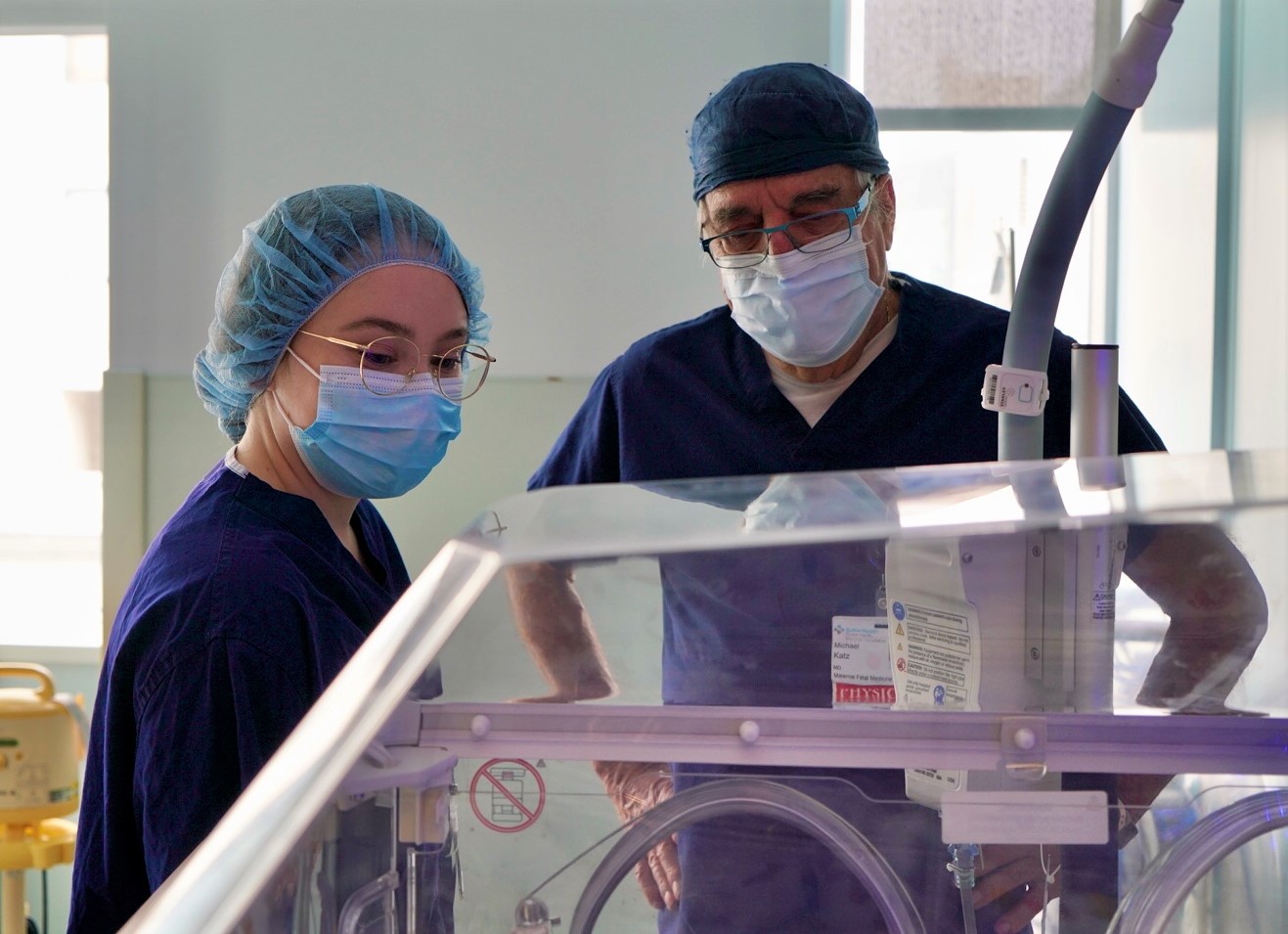
Dr. Katz describes how “preemies” receive around-the-clock care in CPMC’s Neonatal Intensive Care Unit.
Meaningful Meetings
One highlight of Katie’s tour was being able to “meet” other babies in the NICU also born at 24-weeks.
Her presence was especially comforting to one mother of a 24-week-old preemie who said seeing Katie gives her hope for her own baby as she’s “the best and greatest outcome.”
Walking down the NICU hallway, Dr. Katz also pointed out for nursing staff that the teen was once a resident of the unit, making her a “professional with lived experience.”
Nurses and doctors described seeing Katie as both “emotional” and “rewarding,” as it’s an example of how with the right care in the right place that premature babies can go on to live healthy lives.
“Taking care of these babies and seeing them grow up has made my career worth doing,” says Dr. Katz.
Sharing Katie’s Journey
When Katie was born, her dad Harold describes the condition in which she arrived in the world as “more dead than alive.”
“I don’t remember being in the NICU, but I’m glad they took good care of me and my mom, and my family,” says Katie. She was in the NICU for nearly three months before going home.
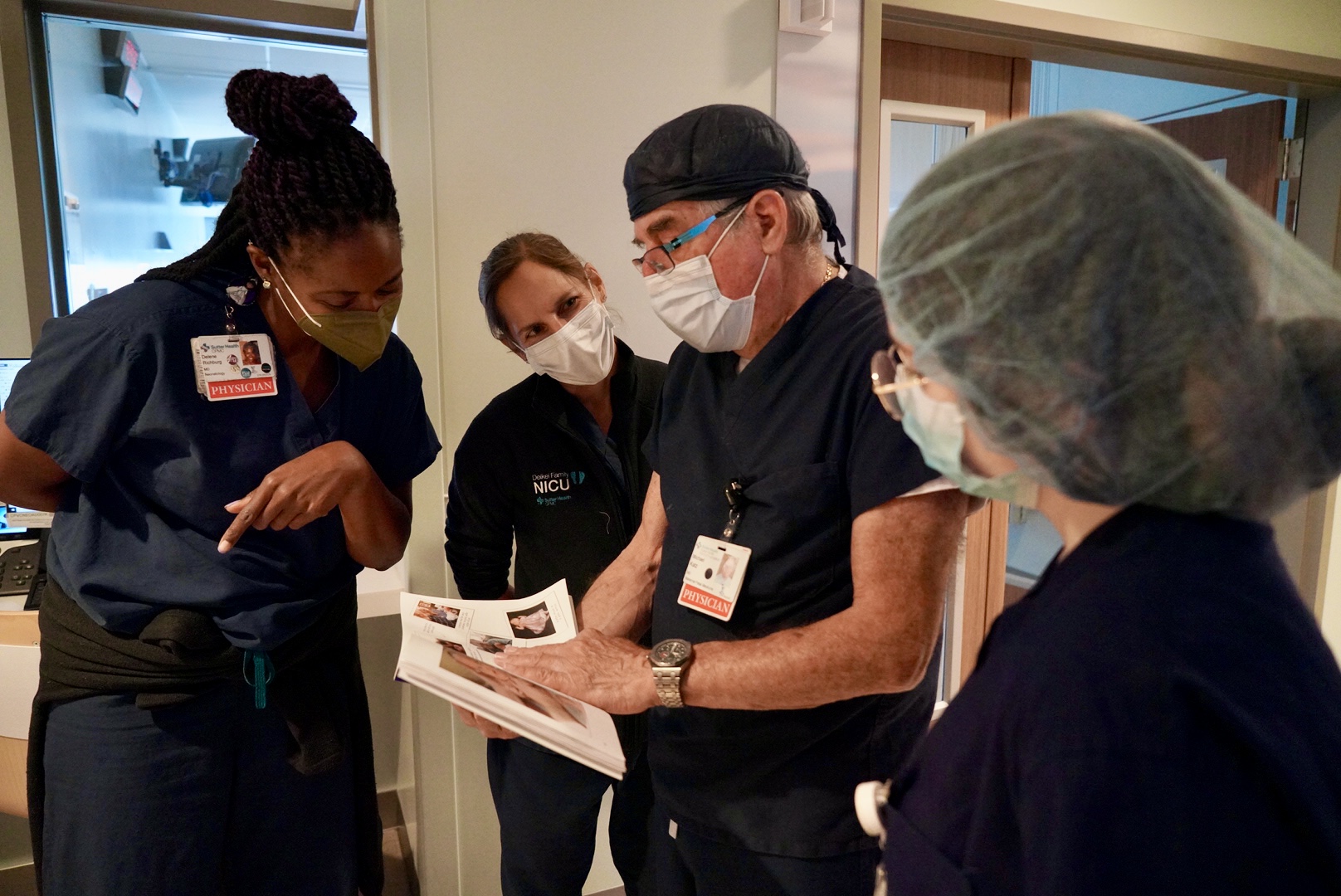
Dr. Katz shows Katie’s preemie book to doctors and nurses.
Katie’s the youngest of the four Davis children—she has three older brothers, one of whom was also a preemie. She and her older brothers were all born at hospitals in the Sutter Health system, either at Sutter’s Alta Bates Summit Medical Center in Berkeley or at CPMC.
Phyllis says that Dr. Katz also oversaw her pregnancies for her sons Nick and Mathew.
“We wouldn’t have the family we have without Dr. Katz,” she says. “I thank him every day.”
Through their journey, Katie’s mom and dad believed that parents in similar situations would benefit from having a reliable source of information.
Harold, a photographer, along with Phyllis, went to work penning Katie’s journey in a book called “The Story of Katie Rose: A Preemie’s Journey.”
Phyllis says the book helps families start an open dialogue with their other children to answer their questions and ease their anxieties.
The pictures are especially important, she says, as a lot of books about babies in the NICU are told through drawings. “In this book, the NICU story is told using photographs to give as literal a feeling as possible for what goes on in the NICU … all the various machinery and procedures, terminology, progress milestones, going home and more.”
Wrapping up the day, Katie says she was grateful to take in all the aspects of Sutter’s care for new moms and babies.
“I’m grateful to Dr. Katz and my nurses for taking care of me. I hope my story will help other parents in the NICU.”
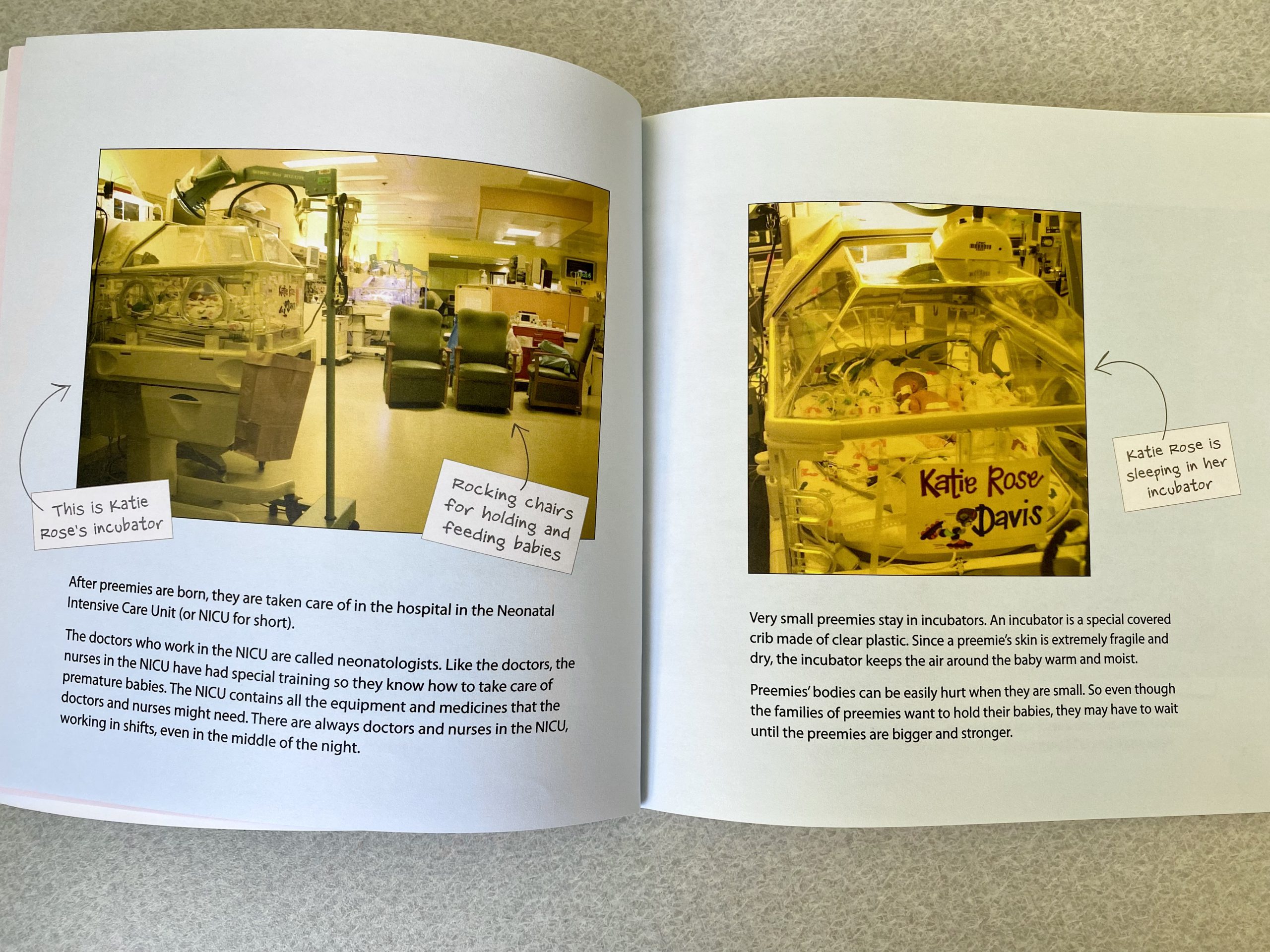
A page from Katie’s book that her parents made to explain her journey in CPMC’s NICU.

